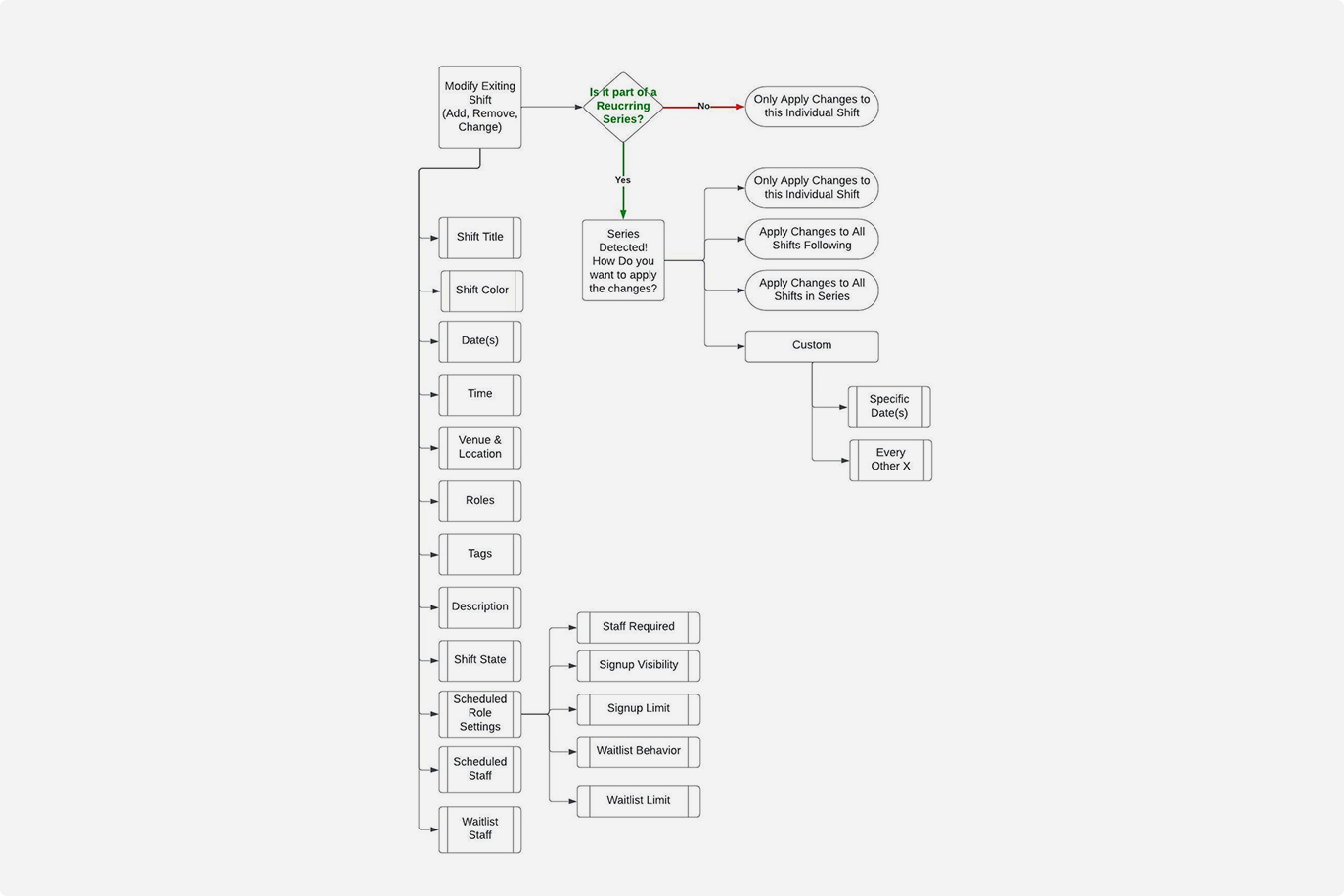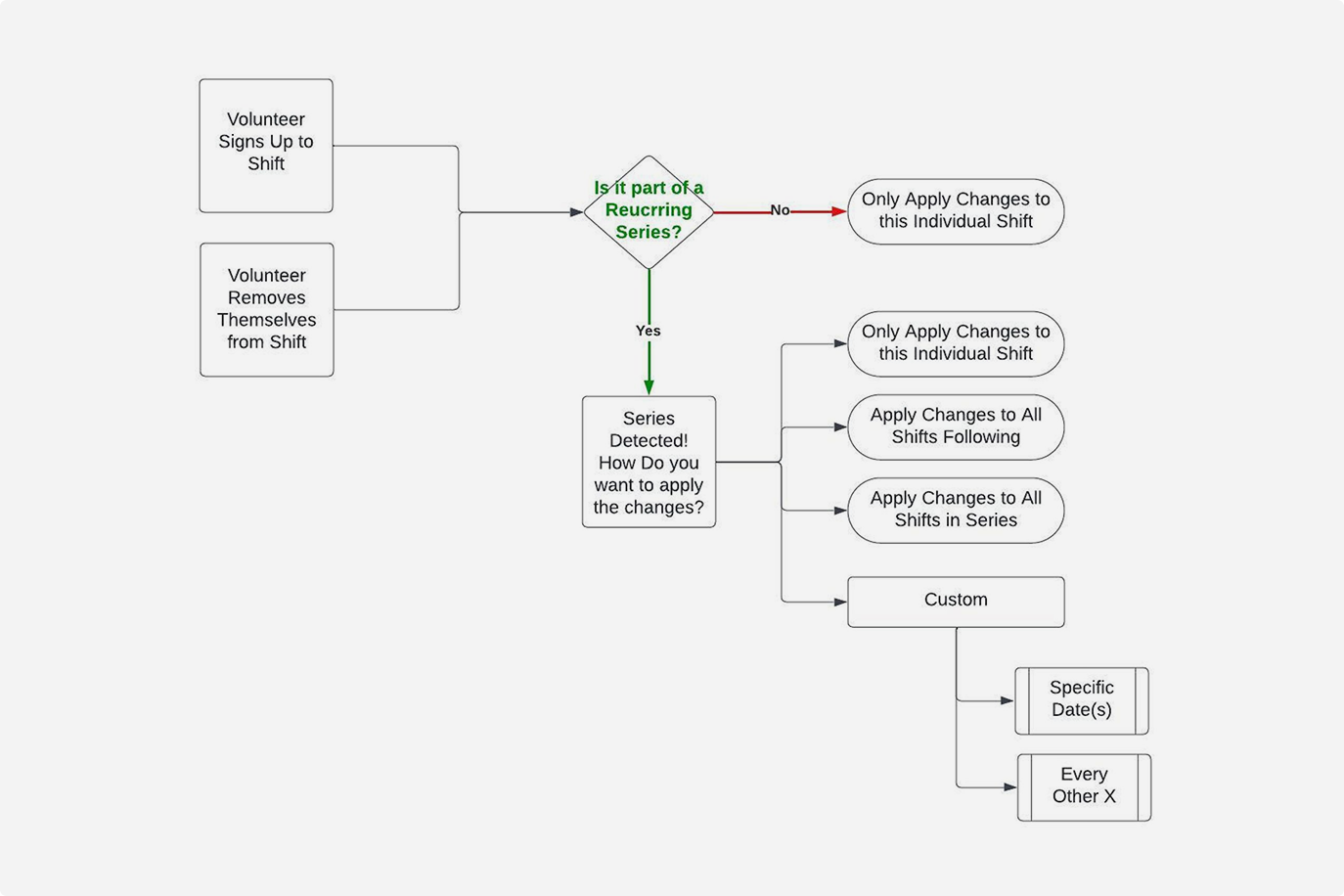Recurring Shifts
My role: Design Manager
Platform: Volunteer Management
Overview
To enhance the experience of volunteers and organizations by making it easier to schedule, manage, and participate in recurring volunteer shifts.
Problem Statement
The current implementation of Recurring Shifts in Bloomerang Volunteer is unintuitive, confusing, and difficult to use. Volunteers struggle to sign up for multiple shifts efficiently, while organizations find it challenging to manage and communicate recurring volunteer opportunities. This leads to a tedious workflow, decreased engagement, and operational inefficiencies.
User Goals & Pain Points
User Goals:
Easily sign up for multiple recurring shifts without repetitive steps.
Clearly understand the details of each recurring shift.
Manage and adjust recurring shifts with minimal effort.
Increase volunteer participation through a seamless scheduling experience.
Pain Points:
Unclear navigation and interaction when signing up for recurring shifts.
No easy way to modify or cancel multiple shifts at once.
Lack of visibility into available recurring shifts.
Organizations struggle to communicate recurring opportunities effectively.
Research & Discovery
To identify the core usability issues and user needs, we conducted:
User Interviews
Conversations with volunteers and nonprofit coordinators to understand their workflow and challenges.
Analysis
Reviewed similar scheduling systems (e.g., SignUpGenius, VolunteerMatch) to understand industry best practices.
Survey Data
Gathered quantitative insights on common frustrations and feature requests from active users.
Key Insights
Users want a streamlined signup process: Volunteers prefer selecting multiple shifts in one action rather than repeating steps.
Organizations need better management tools: Coordinators require bulk editing capabilities to adjust recurring shifts efficiently.
Clearer scheduling visibility is critical: Volunteers struggle with understanding which shifts they have signed up for versus available opportunities.
Flexibility is key: Users want the ability to easily modify or cancel recurring shifts without manual workarounds.
Design Process
Research & Analysis
Synthesized user feedback and data to define key problem areas.
Wireframing & Prototyping
Created low-fidelity interactive wireframes to explore different potential workflows.
User Testing
Conducted usability tests on prototypes to validate improvements.
Iterative Refinements
Based on feedback, refined the design to enhance clarity and ease of use.
Final Design & Development Handoff
Delivered high-fidelity mockups and interaction specifications to the development team.
Solution
The redesigned Recurring Shifts feature simplifies volunteer scheduling and management by introducing:
Bulk Sign-Up: Volunteers can select multiple shifts at once instead of registering for each shift individually.
Shift Overview Panel: A clear, intuitive display of available, selected, and past shifts.
Easy Modifications: Volunteers can reschedule or cancel multiple recurring shifts in one step.
Automated Reminders: Organizations can send automated confirmations and reminders for upcoming shifts.
Enhanced Admin Controls: Nonprofits gain tools for bulk editing, filtering, and communicating recurring shifts.
Impact & Benefits
Increased Volunteer Engagement: Simplifying sign-ups encourages more participation.
Reduced Administrative Burden: Organizations save time creating, managing and communicating shift schedules.
Improved Clarity & Usability: A more intuitive interface reduces confusion and increases user satisfaction.
Higher Retention Rates: Volunteers are more likely to return when scheduling is intuitive and hassle-free.
Conclusion
The Recurring Shifts redesign enhances the overall user experience by addressing key pain points and streamlining the signup and management process. By making the feature more intuitive and efficient, Bloomerang Volunteer empowers both volunteers and organizations to better coordinate recurring opportunities, leading to stronger engagement and community impact.





